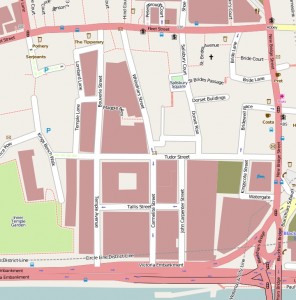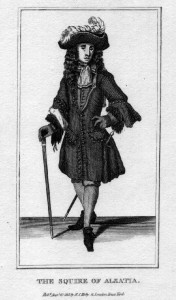
Establishing the topology of Alsatia will be an important theme in this project. To begin with, a map of the area today. Of course, it has been heavily redeveloped several times; despite this, indications of its position and history are are preserved in some of the roads and street-names. A crypt from the religious house still exists, in Magpie Alley.
Henry Harben’s Dictionary of London (1918) states: “The precinct comprised the area from Whitefriars Street east to Temple Lane west, and north from the Thames almost to Fleet Street, in Farringdon Ward Without.”
Lombard Lane was previously Lombard Street, and part of the precincts (Harben; see also Harben’s entry for Pleydell Court and Street)
Also shown is another sanctuary, Salisbury Court, once the place and Inn of the Bishops of Salisbury. (Harben)
Map generated from Open Street Map data under a CC-BY-SA license. Click to enlarge.

